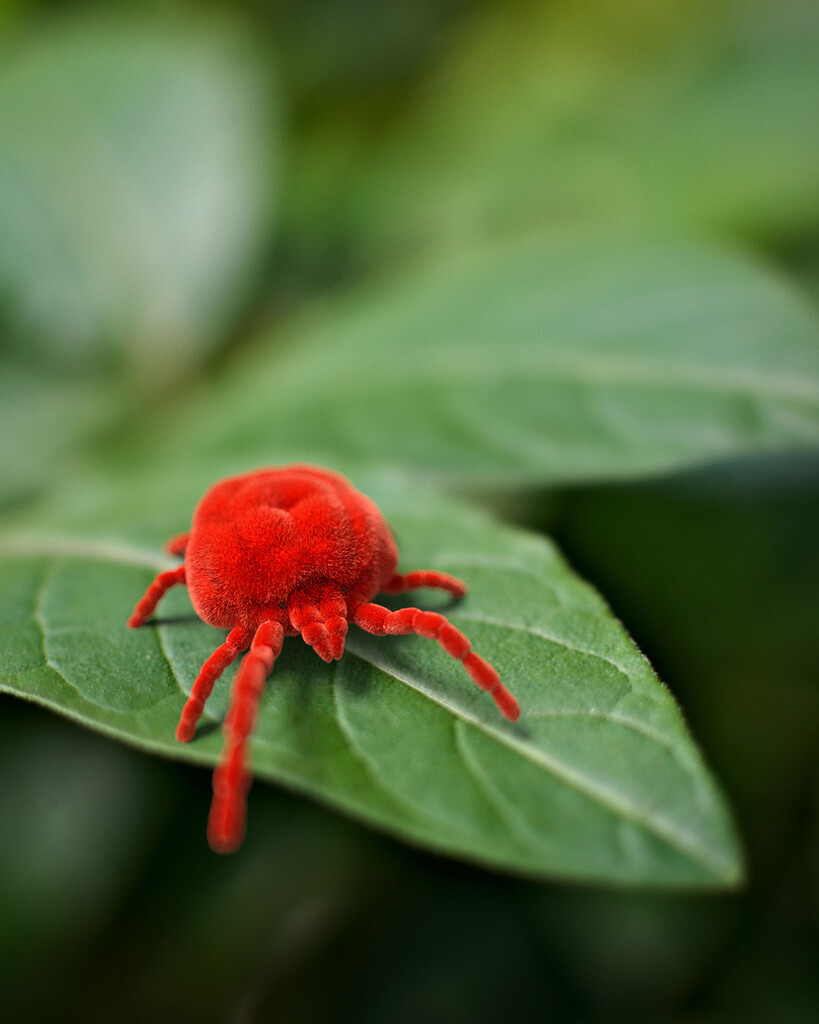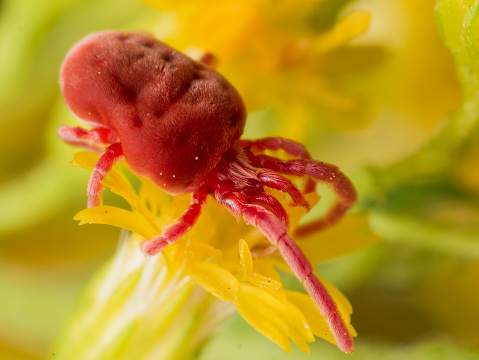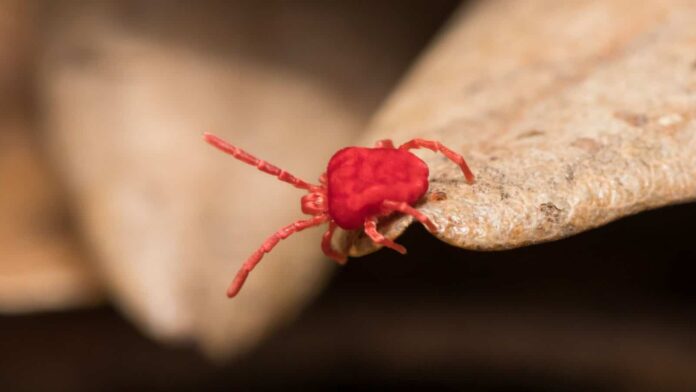Introduction
Red velvet mites are small arachnids belonging to the family Trombidiidae, known for their striking bright red color and velvety appearance. These mites are commonly found in soil, leaf litter, and under rocks, especially in tropical and subtropical regions. They are most noticeable during the rainy season when they emerge in large numbers. Despite their tiny size, red velvet mites play an important ecological role. In their larval stage, they are often parasitic on insects, while the adult mites are free-living predators that feed on insect eggs, small arthropods, and organic matter, helping to control pest populations and aid in decomposition.

In Hindi – Beer Bahoti
In Punjabi – Beer Bahoti
In Marathi – Lal Makhmali Keet
In Gujarati – Laal Samidi
In Tamil – Semman Poochi
In Telugu – Erupu Purugu
In Kannada – Kempu Hulu
In Malayalam – Chuvappu Puzhu
In Bengali – Lal Poka
In Urdu _ Beer Bahoti
HEALTH BENEFITS:

Predators of pest insects:
As adults and nymphs, red velvet mites hunt and consume small arthropods and insect eggs, including those of crop pests like aphids, spider mites, and termites.
Biological control agent:
Some species, such as those in the genus Allothrombium, are being studied as potential biological control agents because their larvae parasitize aphids.
Soil health:
They play an important role in a healthy soil ecosystem, where they spend much of their lives interacting with other soil organisms.
Harmless to humans:
Despite their intimidating appearance, red velvet mites do not bite humans or animals. The larvae of this species are parasitic only to other arthropods.
General vitality:
Certain cultures believe that preparations made from red velvet mites can help with general health and vitality.
Infertility and paralysis:
In traditional Eastern medicine, extracts from some species have been used to treat conditions such as male infertility and paralysis.
Antimicrobial properties:
Early research has explored the antibacterial and antifungal properties of red velvet mite extracts, suggesting they have a chemical defense against microbes in their environment.
Anti-inflammatory:
Some herbal products claim that red velvet mite oil has anti-inflammatory properties, but these products are not evaluated by mainstream medicine.
SIDE EFFECTS:

Allergic reactions:
Some people might be allergic to their body fluids or hairs, leading to swelling or irritation.
No proven medical use:
Using red velvet mites in traditional medicine (like for treating paralysis or sexual problems) is not scientifically proven and can be risky.
Harmful if misused:
Crushing or using these mites as medicine might cause infections or other unknown health problems.
Environmental impact:
Collecting too many mites from nature can harm the environment, as they help control pests and keep soil healthy.
HOW TO USE:

1. Traditional Medicine / Folk Remedies
In some traditional systems (like Ayurveda or folk practices in India), red velvet mites are used for their believed medicinal properties.
Method:
Drying and Powdering: The mites are collected, dried, and ground into a powder.
Preparation: The powder may be mixed with honey, ghee, or herbal decoctions.
Usage: This mixture is sometimes taken orally or applied topically to treat ailments like skin infections, wounds, or general body weakness.
Note: Scientific evidence for these uses is limited, and safety should be considered before use.
2. Biological Pest Control
Red velvet mites are predators of pest insects, like aphids, and are sometimes used naturally in agriculture for pest control.
Method:
Encouraging Natural Presence: Farmers may encourage their presence by maintaining healthy soil and avoiding harmful pesticides.
Introducing Mites: In some cases, mites may be introduced to crops to reduce pest populations.
3. Scientific Research
Red velvet mites are studied for their unique biology, development, and potential bioactive compounds.
Method:
Collect mites carefully using brushes or aspirators.
Use them in lab experiments or chemical extraction.
Important Tips:
If you want to use red velvet mites medicinally, consult a healthcare professional or an expert in traditional medicine.
Avoid wild collection without proper identification and knowledge. Ensure ethical and sustainable use, especially since mites can play important ecological roles.




